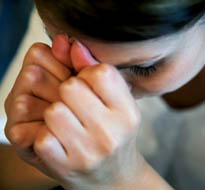
The cultivation and maintenance of healthy social relationships, a key developmental marker for a teenager, has been linked to positive maturation and well-being throughout adulthood. However, the lasting impact that negative interpersonal histories during this time can have on a young person’s well-being later in life has not been the subject of significant study.
A 2011 paper in the Journal of Adolescent Health, “Adverse Adolescent Relationship Histories and Young Adult Health: Cumulative Effects of Loneliness, Low Parental Support, Relationship Instability, Intimate Partner Violence, and Loss,” utilizes self-reported general health and mental health data from the National Longitudinal Study of Adolescent Health to examine the correlation between adverse interpersonal relationship events and poor health in adolescents and young adults over a roughly seven-year period.
Key study findings include:
- There was a significant correlation between earlier reports of depression, loneliness, intimate partner violence, and loss/bereavement and poor health at the end of that seven-year period. Respondents with depressive symptoms reported more loneliness, romantic relationship violence, and relationship losses (as well as significantly lower levels of parental support) than survey respondents overall.
- Females were more likely to be exposed to a higher number of relationship risks than men; 27.3% of female survey respondents were rated as “high risk” (scoring high for measures of loneliness, romantic instability, relationship violence and loss), while 18.5% of the male respondents were rated as “high risk.”
- Intimate partner violence was associated with a 38% increase in worse health later on. For bereavement, “having lost a loved one was associated with 19% greater odds of reporting poorer health.”
- Multiple relationship transitions (such as breaking up with a romantic partner or moving from place to place) were also associated with an increased likelihood of poor health (6% more likely for every additional partner after the age of 16).
The authors acknowledge that while they “favor the interpretation that relationship risks contribute causally to later poor health, an alternative explanation could be that individuals with poor health are more likely to encounter relationship risks, or that a third variable contributes to relationship risks and poor health.”
Tags: adolescence, medicine, youth, bullying
